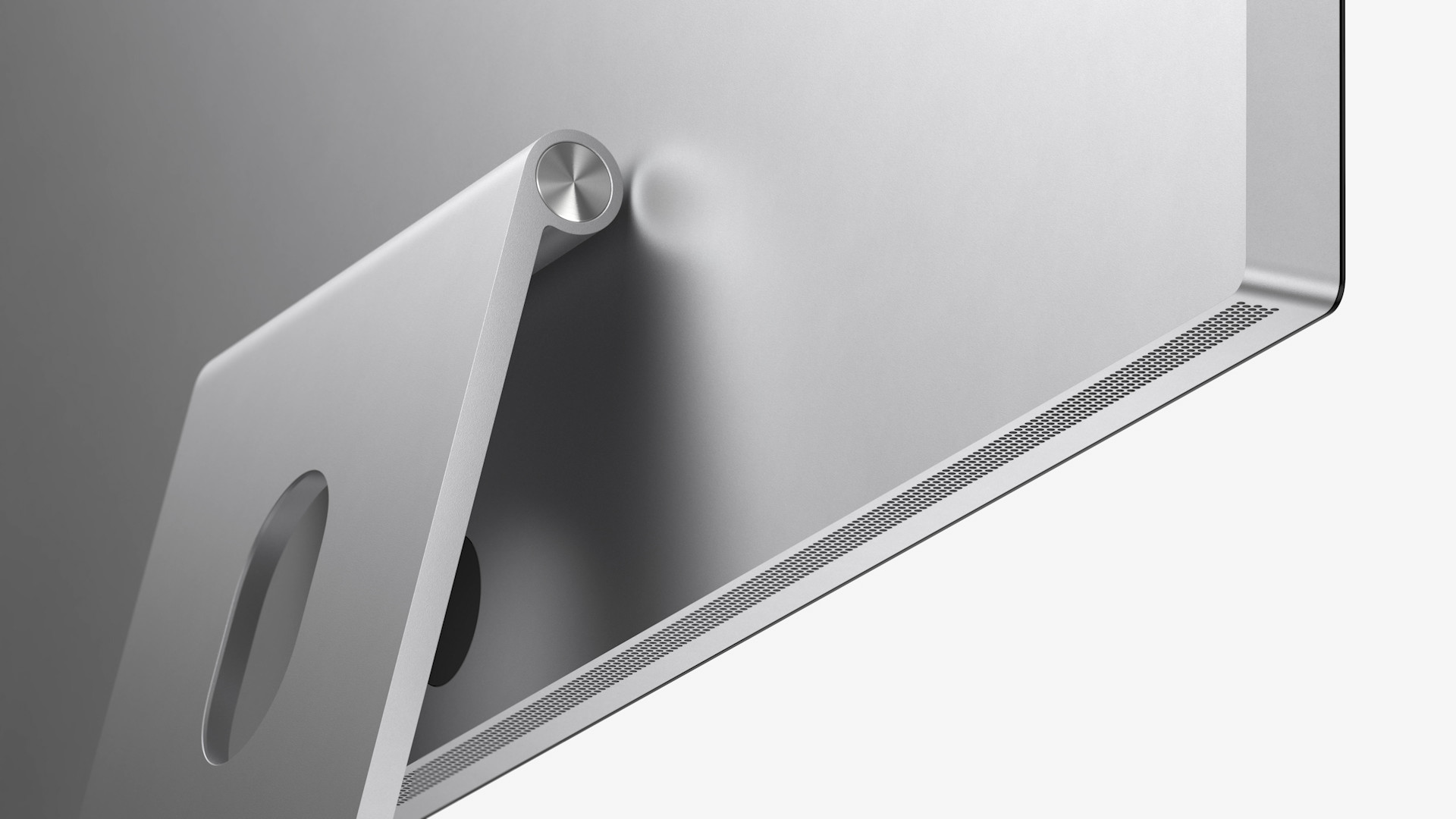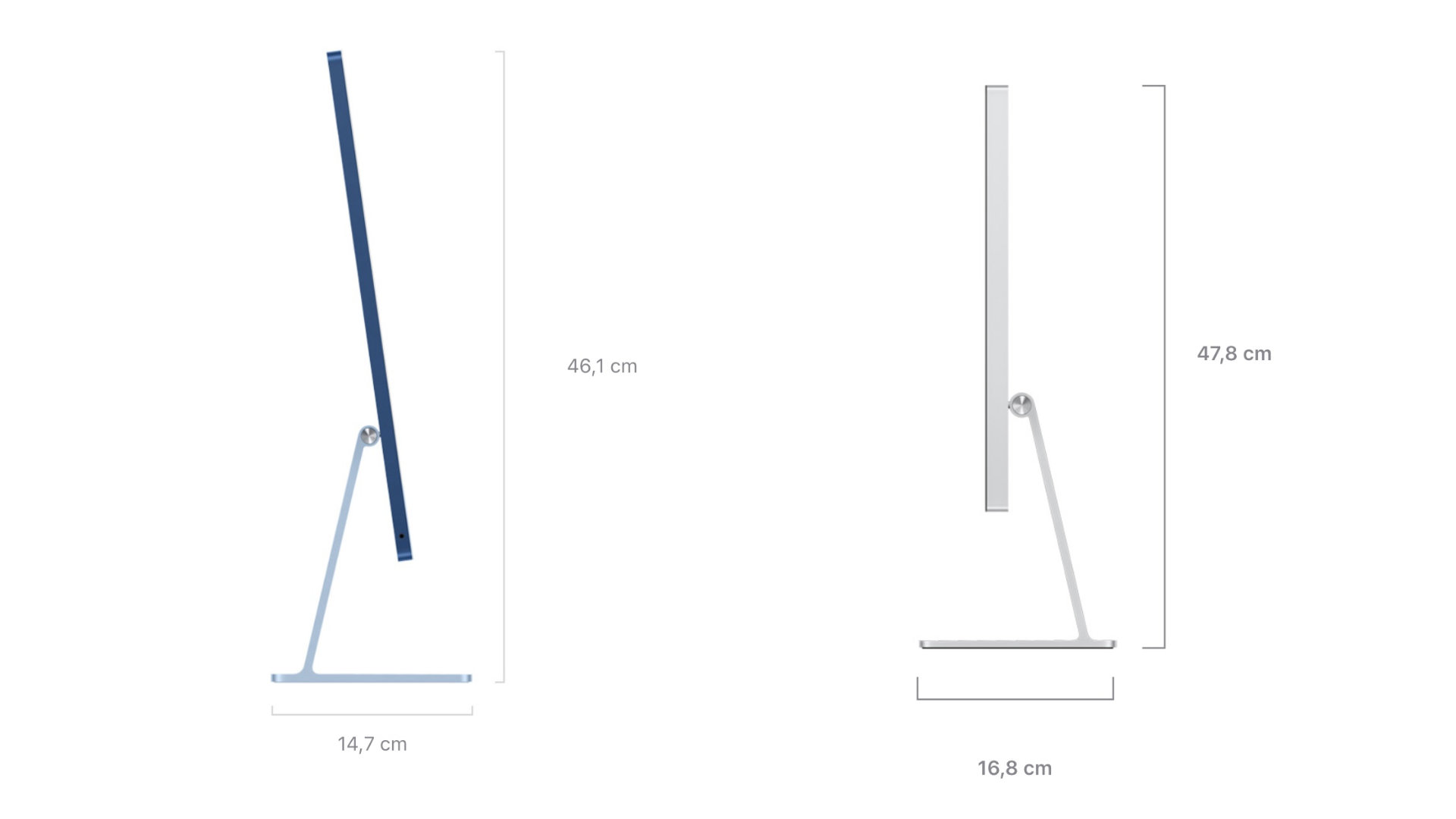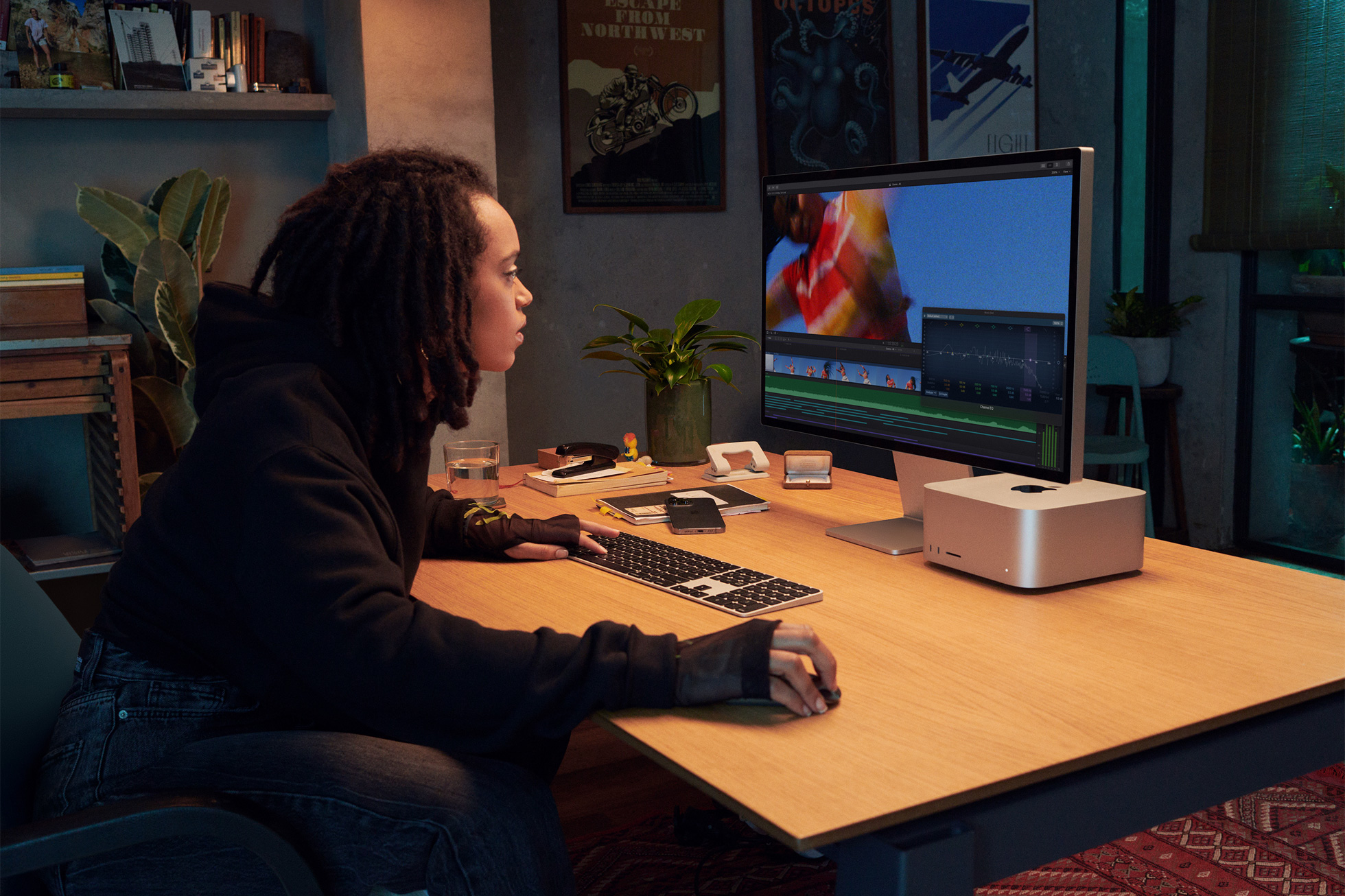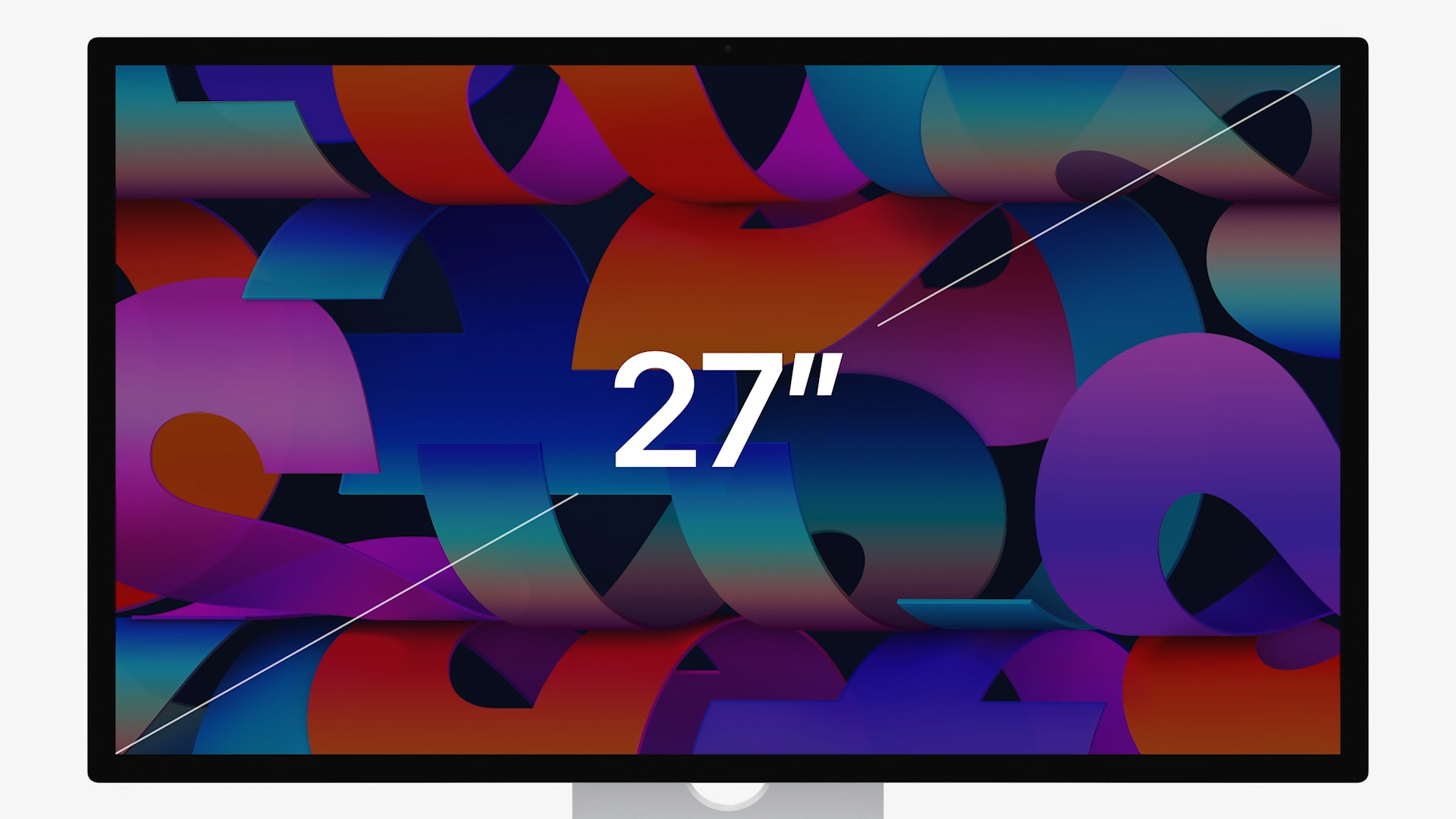During Tuesday's keynote, Apple surprised many apple fans with its brand new Studio Display monitor. This is a relatively interesting piece that moves to a completely new goal in terms of technology, as it hides one interesting thing next to another. With this 27″ 5K Retina display, we find a built-in 12MP ultra-wide-angle camera with Center Stage, three studio-quality microphones and six speakers with Dolby Atmos surround sound support. At the same time, Apple also invested in the Apple A13 Bionic chip, which ensures the correct functionality of the mentioned functions.
It could be interest you

Despite this, it is rather surprising that the device is thicker than last year's 24″ iMac with the M1 chip, which is a full-fledged all-in-one computer by the way. The depth of the display of this Mac is only 11,5 millimeters. The device is so thin that it can't even offer a 3,5 mm jack connector on the back, alongside the other connectors, because it is simply too big and would exceed the dimensions of the computer itself. After all, that's why this port is on the side. Although we do not know the official depth of the Studio Display (yet), it is clear at first glance that it is simply a bit thicker. We can compare it from the official data only if the stands are taken into account. While the depth of the 24″ iMac with stand is 14,7 centimeters, the Studio Display is 16,8 centimeters. But the difference itself is visible directly from the pictures.

Why the Studio Display is thicker than the 24″ iMac (2021)
Before we get into the possible answer, it is necessary to mention that we do not yet know the real reason. The Studio Display monitor is not yet on sale. Therefore, experts cannot take it apart in detail and look under the so-called hood to find out how the thickness is when taking into account the body and other factors. The chin of the 24″ iMac is mentioned as a possible answer that Apple fans are talking about now. This is where all the components are hidden, while there is practically only empty space behind the screen. This is a rather elegant solution, thanks to which the body can be so thin - simply put, the computer is generally adjusted to its chin and therefore enlarged.
However, Studio Display probably takes the second possible approach. As you can see in the gallery attached above, there is no chin on this monitor. Only one thing can be concluded from this. The necessary components are hidden directly under the screen itself and can theoretically extend over the entire monitor, causing it to be thicker. On the other hand, this solved the problem that some apple growers complained about. In the direction of the chin, he certainly does not spare criticism.
It could be interest you






